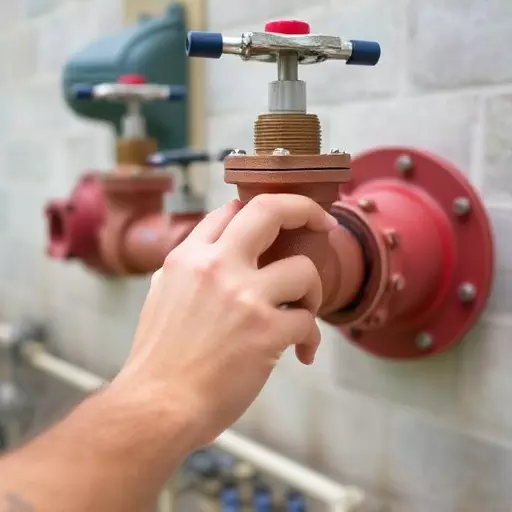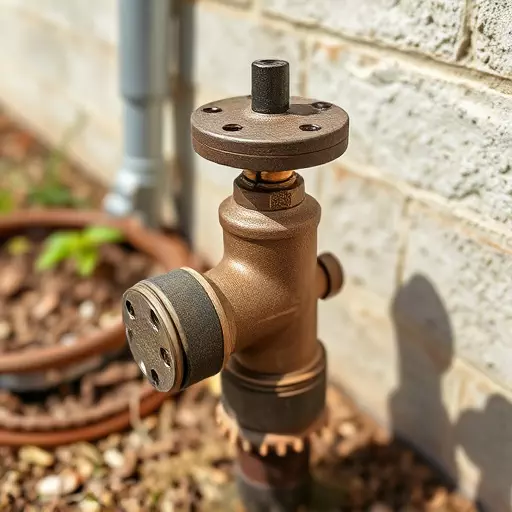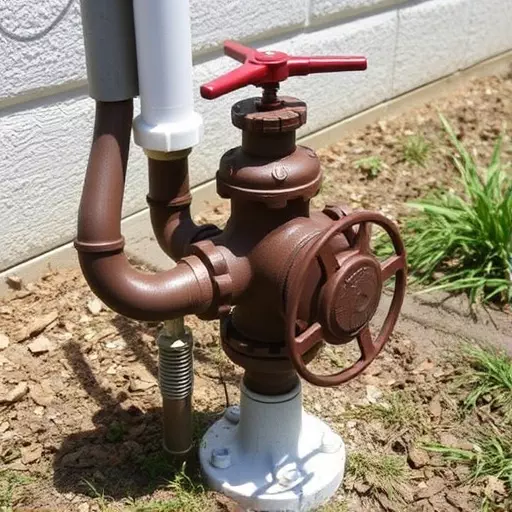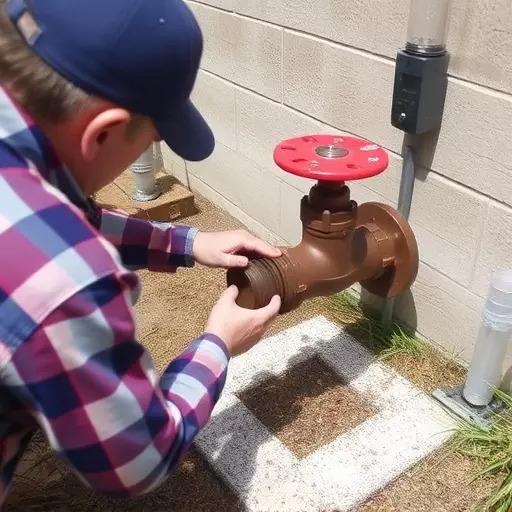Annual backflow preventer testing in Spring Lake is a non-negotiable safety measure for commercial properties, mandated by local regulations. This rigorous process ensures critical devices are functioning optimally to safeguard water quality and public health. Common issues like faulty devices or misinstallation can lead to test failures, highlighting the need for professional inspections and proper record-keeping. By adhering to these protocols, Spring Lake Utilities maintains a secure water distribution system, preventing costly fines and disruptions while fostering community well-being.
Water utility backflow testing is a critical process designed to safeguard water systems from contamination and ensure the safety of residents in Spring Lake. This comprehensive guide explores the essential components of backflow prevention, emphasizing the annual testing requirement for residential and commercial applications. From understanding backflow preventer types to addressing common issues, this article provides insights into best practices for maintaining regulatory compliance and record-keeping, ultimately reinforcing the importance of timely inspections.
- Understanding Backflow Preventers: Their Role and Types in Water Systems
- The Importance of Annual Backflow Testing: Why It's Crucial for Spring Lake Utilities
- Commercial Backflow Prevention: Inspection Process and Best Practices
- Common Issues and Troubleshooting during Backflow Testing Procedures
- Regulatory Compliance and Record-Keeping: Ensuring Safe Water Distribution
Understanding Backflow Preventers: Their Role and Types in Water Systems

The Importance of Annual Backflow Testing: Why It's Crucial for Spring Lake Utilities

Backflow preventers are critical safety mechanisms designed to protect water supplies from contamination. Annual backflow testing is an essential practice for Spring Lake Utilities to ensure these devices are functioning correctly and maintaining the integrity of our community’s water system. Regular inspections, typically conducted by certified professionals, play a pivotal role in preventing hazardous backflow events that could introduce pollutants or contaminants into our drinking water.
For Spring Lake Utilities, adhering to annual backflow preventer testing protocols is not just a regulatory requirement but also a matter of public health and safety. By proactively identifying and addressing any potential issues with these devices, we can safeguard the quality and purity of our water supply. This proactive approach ensures that residents and businesses throughout Spring Lake have access to clean and safe water, fostering a healthy and thriving community.
Commercial Backflow Prevention: Inspection Process and Best Practices

In commercial settings, backflow prevention is a critical aspect of water safety and quality management. The process involves regular inspections and testing of backflow preventers, such as reduced pressure devices (RPDs), to ensure they function correctly and maintain the integrity of the water supply system. During a Commercial Backflow Preventer Inspection, professionals assess the condition of the device, check for any signs of damage or corrosion, and verify its proper installation and operation. This includes examining the pressure relief mechanisms, testing the shut-off valves, and ensuring the backflow preventer is compatible with the specific water supply and application.
Best practices for commercial backflow prevention include scheduling annual backflow preventer testing in Spring Lake as per local regulations, maintaining accurate records of inspections and maintenance, and implementing a robust safety program. It’s crucial to use qualified and certified technicians who are well-versed in the latest industry standards and guidelines. Additionally, regular training sessions for staff involved in handling or managing water systems can help maintain a high level of expertise and awareness regarding backflow prevention, ensuring a safe and sustainable water supply for all commercial operations.
Common Issues and Troubleshooting during Backflow Testing Procedures

During backflow testing procedures, several common issues often arise that can delay or disrupt the process. One of the most frequent problems is faulty or improperly installed backflow preventers. These devices are crucial for preventing contaminated water from flowing back into the main supply, and any malfunction or misinstallation can lead to failure during testing. Regular inspection and maintenance of these preventers, especially in commercial settings, are essential to ensure their reliability. Annual backflow preventer testing in Spring Lake is not only a regulatory requirement but also a critical step in safeguarding water quality.
Another challenge lies in identifying and addressing specific conditions that may affect test results. Factors like temperature fluctuations, recent plumbing work, or unusual water pressure can influence the accuracy of tests. Troubleshooting requires a systematic approach, including checking for proper water flow direction, verifying all connections, and ensuring no leaks are present. Commercial backflow preventer inspection demands meticulous attention to detail as these systems often serve vital infrastructure and public health facilities.
Regulatory Compliance and Record-Keeping: Ensuring Safe Water Distribution

Regulatory compliance and meticulous record-keeping are vital aspects of maintaining a safe water distribution system. In Spring Lake, annual backflow preventer testing is a non-negligible requirement for all commercial properties. This stringent protocol ensures that backflow preventers—devices designed to stop contaminated water from flowing back into the main supply—are functioning optimally. During these inspections, professionals verify the integrity of the equipment, ensuring it meets the necessary standards set by regulatory bodies. Accurate record-keeping accompanies each test, documenting results, maintenance performed, and any necessary replacements or repairs. This meticulous documentation not only satisfies legal obligations but also serves as a critical tool for identifying trends, preventing future issues, and enhancing overall water quality.
Proper record-keeping further enables swift action in the event of any deviations from the norm. It allows water utility providers to quickly pinpoint problem areas, implement corrective measures, and restore confidence in the safety of the water distribution network. Commercial backflow preventer inspections play a pivotal role in safeguarding both public health and the integrity of Spring Lake’s water supply system.


